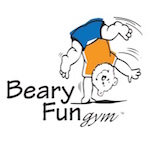1) Curriculum Design and Development:
- Design age-appropriate physical education programs that incorporate fun and developmentally appropriate activities to enhance children’s motor skills, coordination, and overall fitness.
2) Program Evaluation and Improvement:
- Identify areas for improvement, such as adjusting the intensity of exercises or adding new activities to increase engagement.
- Recommend curriculum changes to better meet age-appropriate fitness goals and address any challenges.
- Implement structured pilot programs to test new activities or modifications, and evaluate their success based on participant feedback and measurable outcomes like increased motor skill proficiency or participation rates.
3) Training and Support:
- Provide training for gym coaches on the effective delivery of the curriculum, ensuring consistent quality and program alignment across all sessions.
4) Monitoring and Assessment:
- Create tools for tracking children’s progress and evaluate the effectiveness of individual sessions.
5) Collaboration with Stakeholders:
- Work closely with coaches and management to tailor programs to meet children’s needs and ensure smooth program implementation.
- Collaborate with external educational experts as needed.
6) Safety and Compliance:
- Ensure that all programs comply with safety guidelines, focusing on the well-being of every child.
- Keeping curriculum updated based on the latest best practices in child fitness and safety standards.

